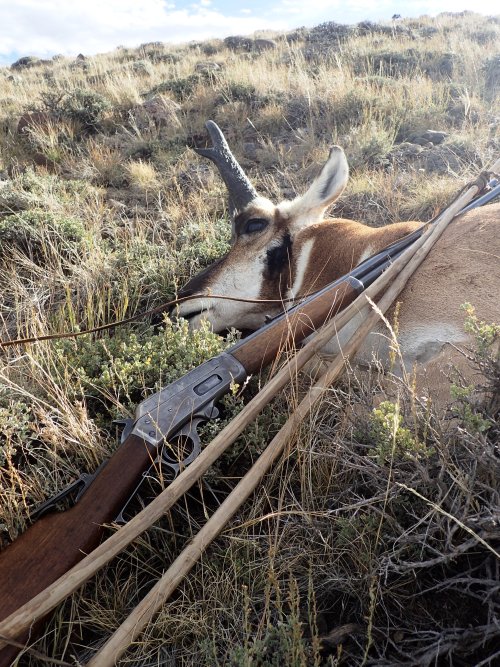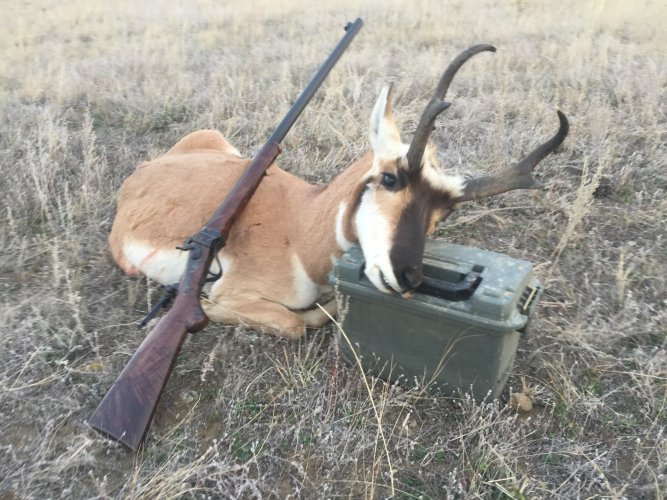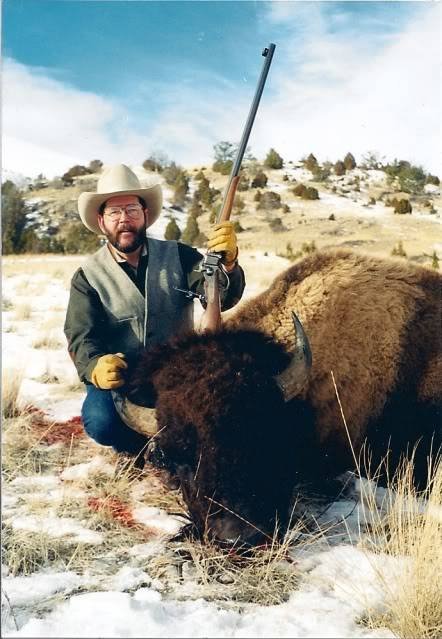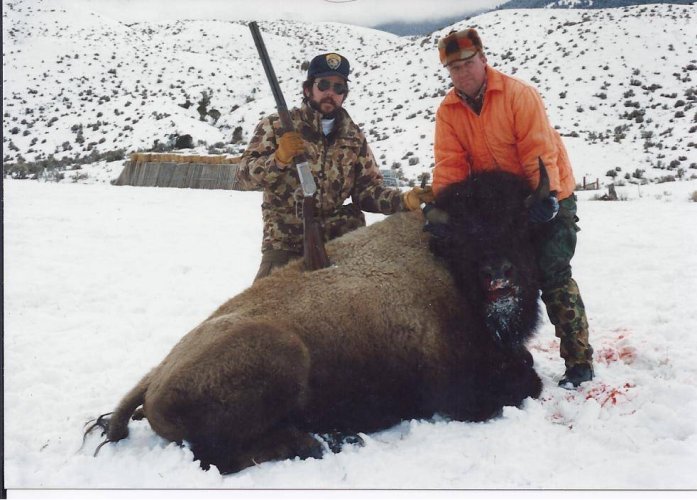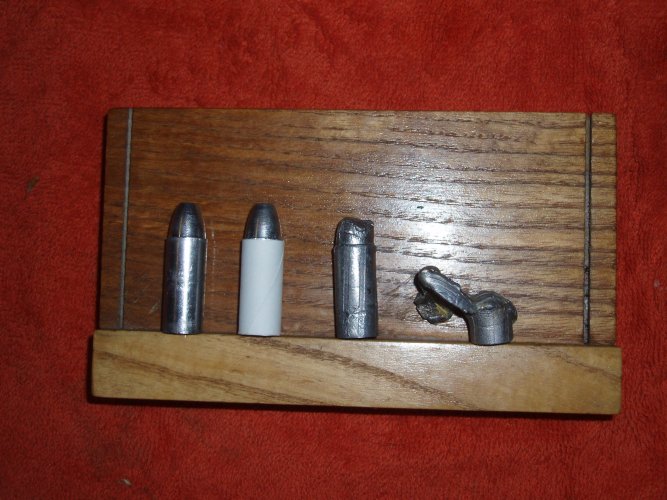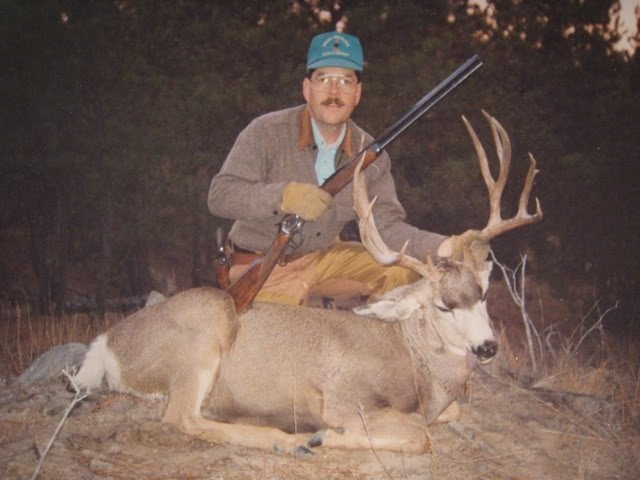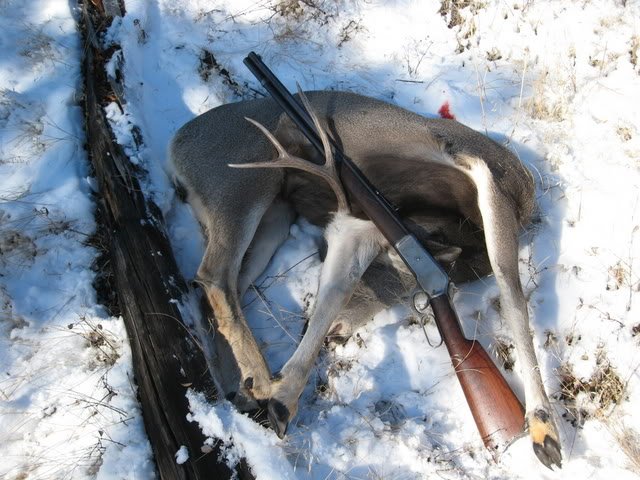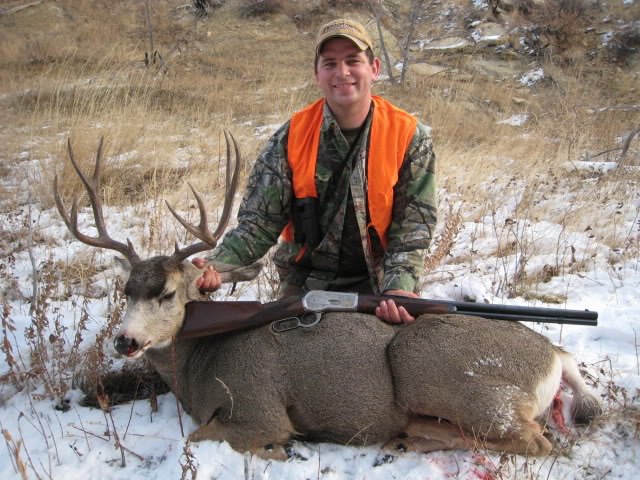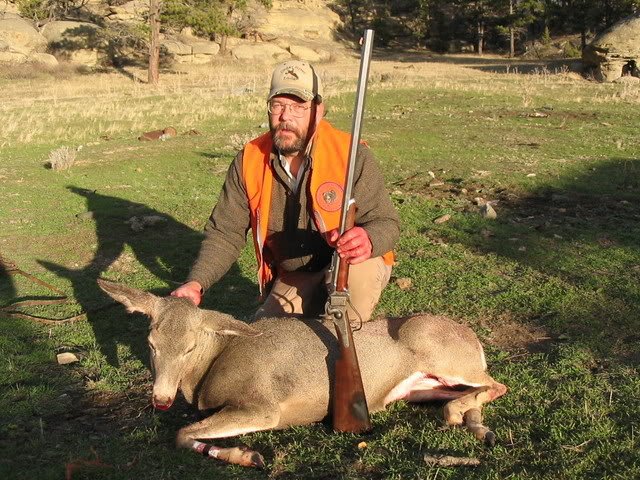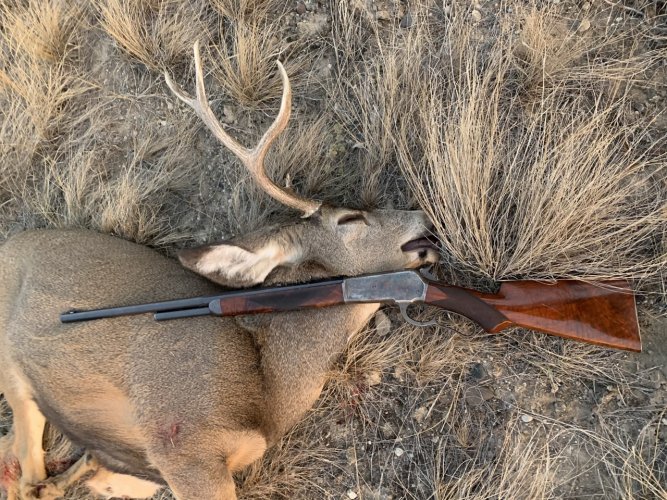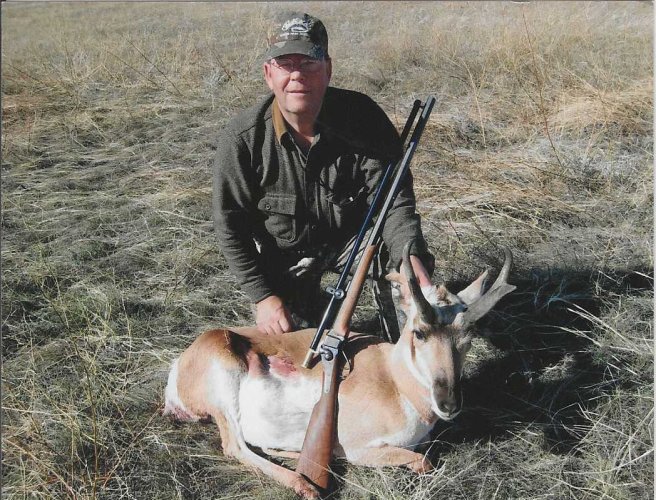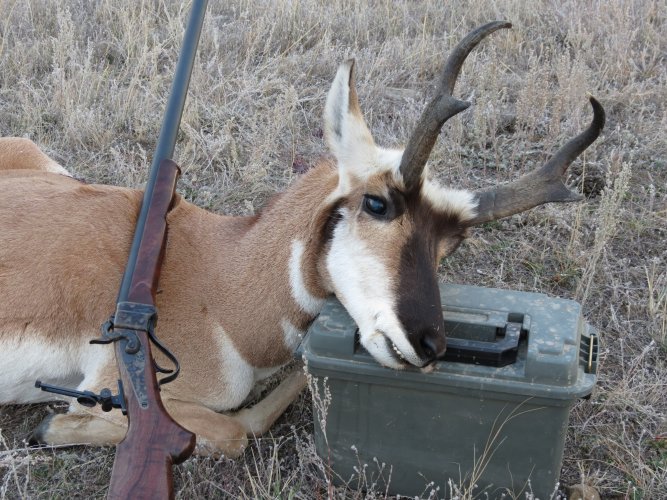Guy
Well-known member
- Joined
- Dec 5, 2018
- Messages
- 497
Great looking rifle! The Henry lever actions I've shot have all been at least reasonably accurate or better.
If you're considering a Skinner - and might someday want to scope your rifle, consider this setup I put on a Henry 360 Buckhammer not long ago: Skinner aperture sight on their combo sight & scope mount and a set of Talley Quick Release rings. You can get rid of the scope in seconds with no tools, or re-mount it with very little change from the zero.
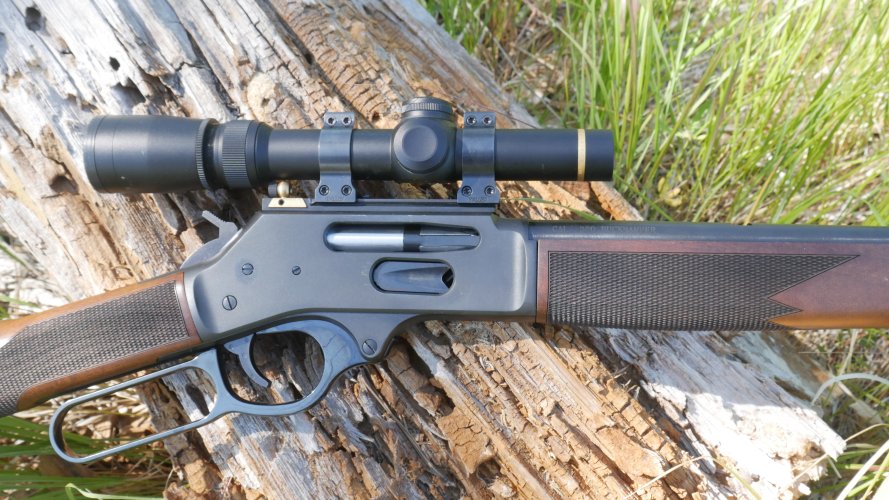
Re the handloading with the 45-70, take care. There are different levels of 45-70 loads. Typically they're broken into three:
1) Trapdoor loads - under 28,000 CUP - these are the lightest loads. The starting loads are very pleasant to shoot. There are also some serious game-taking loads here which won't beat up the shooter much either.
2) Lever Action loads - up to 40,000 CUP - the next step up and safe for Henry & Marlin lever action rifles. Top levels of these loads will let ya know you've touched off something with power. Do they kill any better? I dunno, but they do go "boom" with authority. Hornady still lists a 400 grain Speer at 2002 fps. I've loaded it, yup, it's stout. Hang on and have fun!
3) Modern Rifle loads - up to 50,000 CUP - meaning Ruger falling block actions and properly converted bolt action rifles. These loads are STOUT - and NOT recommended for lever action rifles.
Those are the breakdowns as published by Hodgdon in their Online Data Center and also in their Annual Manual.
I've been loading the 45-70 for quite some time and have used both Marlin and Henry rifles. It's truly a case of "mild to wild" with the recoil and power.
Highly recommend reading the info on the Garrett Cartridges website, as Randy Garrett did a great job of coming up with some superb premium ammo for the 45-70. There's some great stuff there like the Vince Lupo safaris wherein Lupo took African big game, really big game, with his 45-70 and Garrett ammo.
45-70 bullets are NOT created equal. Some expand readily on small deer. Others hang together and punch completely through big game. Really big game. Brian Pearce reported that he shot one cape buffalo and killed it, as well as the unseen one standing behind it, with one shot! It's not as powerful as the 458 Win mag, though some handloaders seem to try to reach that level, but it is strong on penetration, with the right bullets.
I've done a lot of loading, testing, practicing with the 45-70, but honestly I've only taken one mule deer with it, years ago. I used a handloaded 405 grain Remington soft point bullet at about 1650 fps. The bullet broke both shoulder blades and the spine and dropped the muley instantly at about 70 yards. Bullet buried itself somewhere in the hillside beyond.
You might also want to head on over to the Marlin Owners forum of which I've been a member for about 20 years. There's a gob of great info on the 45-70 there.
So, Garrett Cartridges, Hodgdon Online Data Center and Marlin Owners forum. That ought to get you going!
Personally, I'm real fond of H4198, Varget, Reloader 7, and more. It's also easy to load the 400+ grain bullets subsonic should you want to do so. I like the 350 grain Hornady, either the flat nose or the round nose soft points for full power hunting loads. The 400 gr Speer is accurate as all get out but a tad soft if really deep penetration is needed. Cast bullets and the 45-70 go together so very well.
Here's my Marlin 45-70. It's got a barrel mounted Skinner aperture sight, their Bear Buster front sight, and a 2.5x Leupold in Quick Release rings. Since this photo I've also added a very bright weapons light mounted on a Wild West Guns light mount. It's my camp gun in bear country.
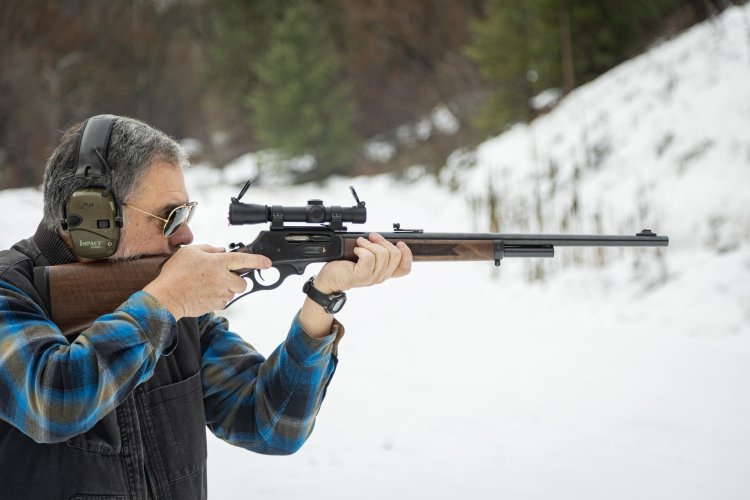
Oh - whichever dies you prefer are probably fine. I've used both RCBS and Hornady dies - but I like to add a fourth die - the Lee Factory Crimp Die. It does a great job of crimping the bullet after it's been properly seated. It's certainly possible to seat and crimp in one step, but I like splitting it into two steps, seating then crimping. I use a turret press so it's an easy step to add.
Feel free to PM me with questions. I really like that big ol' cartridge!
Regards, Guy
If you're considering a Skinner - and might someday want to scope your rifle, consider this setup I put on a Henry 360 Buckhammer not long ago: Skinner aperture sight on their combo sight & scope mount and a set of Talley Quick Release rings. You can get rid of the scope in seconds with no tools, or re-mount it with very little change from the zero.

Re the handloading with the 45-70, take care. There are different levels of 45-70 loads. Typically they're broken into three:
1) Trapdoor loads - under 28,000 CUP - these are the lightest loads. The starting loads are very pleasant to shoot. There are also some serious game-taking loads here which won't beat up the shooter much either.
2) Lever Action loads - up to 40,000 CUP - the next step up and safe for Henry & Marlin lever action rifles. Top levels of these loads will let ya know you've touched off something with power. Do they kill any better? I dunno, but they do go "boom" with authority. Hornady still lists a 400 grain Speer at 2002 fps. I've loaded it, yup, it's stout. Hang on and have fun!
3) Modern Rifle loads - up to 50,000 CUP - meaning Ruger falling block actions and properly converted bolt action rifles. These loads are STOUT - and NOT recommended for lever action rifles.
Those are the breakdowns as published by Hodgdon in their Online Data Center and also in their Annual Manual.
I've been loading the 45-70 for quite some time and have used both Marlin and Henry rifles. It's truly a case of "mild to wild" with the recoil and power.
Highly recommend reading the info on the Garrett Cartridges website, as Randy Garrett did a great job of coming up with some superb premium ammo for the 45-70. There's some great stuff there like the Vince Lupo safaris wherein Lupo took African big game, really big game, with his 45-70 and Garrett ammo.
45-70 bullets are NOT created equal. Some expand readily on small deer. Others hang together and punch completely through big game. Really big game. Brian Pearce reported that he shot one cape buffalo and killed it, as well as the unseen one standing behind it, with one shot! It's not as powerful as the 458 Win mag, though some handloaders seem to try to reach that level, but it is strong on penetration, with the right bullets.
I've done a lot of loading, testing, practicing with the 45-70, but honestly I've only taken one mule deer with it, years ago. I used a handloaded 405 grain Remington soft point bullet at about 1650 fps. The bullet broke both shoulder blades and the spine and dropped the muley instantly at about 70 yards. Bullet buried itself somewhere in the hillside beyond.
You might also want to head on over to the Marlin Owners forum of which I've been a member for about 20 years. There's a gob of great info on the 45-70 there.
So, Garrett Cartridges, Hodgdon Online Data Center and Marlin Owners forum. That ought to get you going!
Personally, I'm real fond of H4198, Varget, Reloader 7, and more. It's also easy to load the 400+ grain bullets subsonic should you want to do so. I like the 350 grain Hornady, either the flat nose or the round nose soft points for full power hunting loads. The 400 gr Speer is accurate as all get out but a tad soft if really deep penetration is needed. Cast bullets and the 45-70 go together so very well.
Here's my Marlin 45-70. It's got a barrel mounted Skinner aperture sight, their Bear Buster front sight, and a 2.5x Leupold in Quick Release rings. Since this photo I've also added a very bright weapons light mounted on a Wild West Guns light mount. It's my camp gun in bear country.

Oh - whichever dies you prefer are probably fine. I've used both RCBS and Hornady dies - but I like to add a fourth die - the Lee Factory Crimp Die. It does a great job of crimping the bullet after it's been properly seated. It's certainly possible to seat and crimp in one step, but I like splitting it into two steps, seating then crimping. I use a turret press so it's an easy step to add.
Feel free to PM me with questions. I really like that big ol' cartridge!
Regards, Guy
Last edited:




